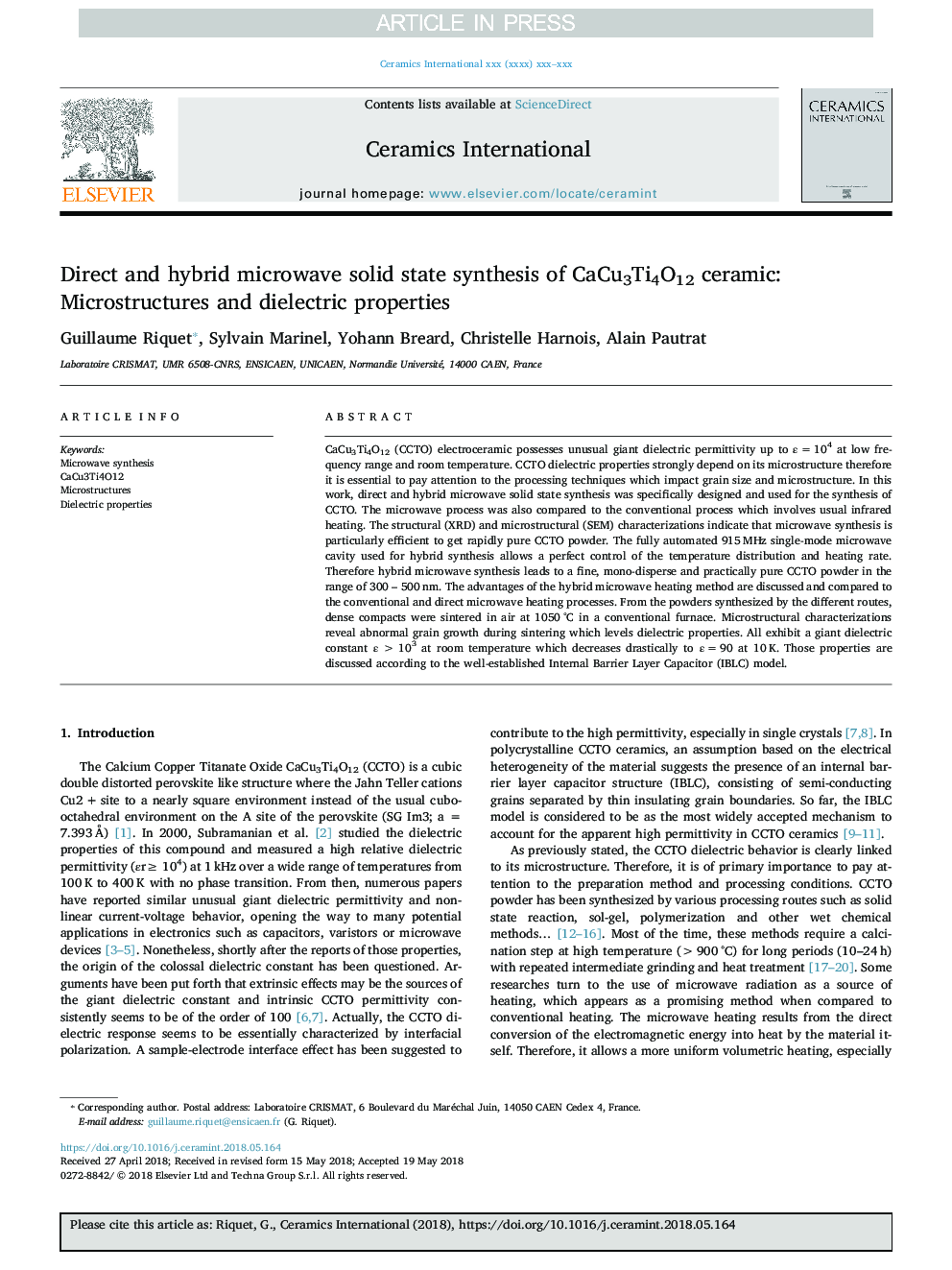| Article ID | Journal | Published Year | Pages | File Type |
|---|---|---|---|---|
| 7886145 | Ceramics International | 2018 | 8 Pages |
Abstract
CaCu3Ti4O12 (CCTO) electroceramic possesses unusual giant dielectric permittivity up to εâ¯=â¯104 at low frequency range and room temperature. CCTO dielectric properties strongly depend on its microstructure therefore it is essential to pay attention to the processing techniques which impact grain size and microstructure. In this work, direct and hybrid microwave solid state synthesis was specifically designed and used for the synthesis of CCTO. The microwave process was also compared to the conventional process which involves usual infrared heating. The structural (XRD) and microstructural (SEM) characterizations indicate that microwave synthesis is particularly efficient to get rapidly pure CCTO powder. The fully automated 915â¯MHz single-mode microwave cavity used for hybrid synthesis allows a perfect control of the temperature distribution and heating rate. Therefore hybrid microwave synthesis leads to a fine, mono-disperse and practically pure CCTO powder in the range of 300 - 500â¯nm. The advantages of the hybrid microwave heating method are discussed and compared to the conventional and direct microwave heating processes. From the powders synthesized by the different routes, dense compacts were sintered in air at 1050â¯Â°C in a conventional furnace. Microstructural characterizations reveal abnormal grain growth during sintering which levels dielectric properties. All exhibit a giant dielectric constant εâ¯>â¯103 at room temperature which decreases drastically to εâ¯=â¯90 at 10â¯K. Those properties are discussed according to the well-established Internal Barrier Layer Capacitor (IBLC) model.
Related Topics
Physical Sciences and Engineering
Materials Science
Ceramics and Composites
Authors
Guillaume Riquet, Sylvain Marinel, Yohann Breard, Christelle Harnois, Alain Pautrat,
